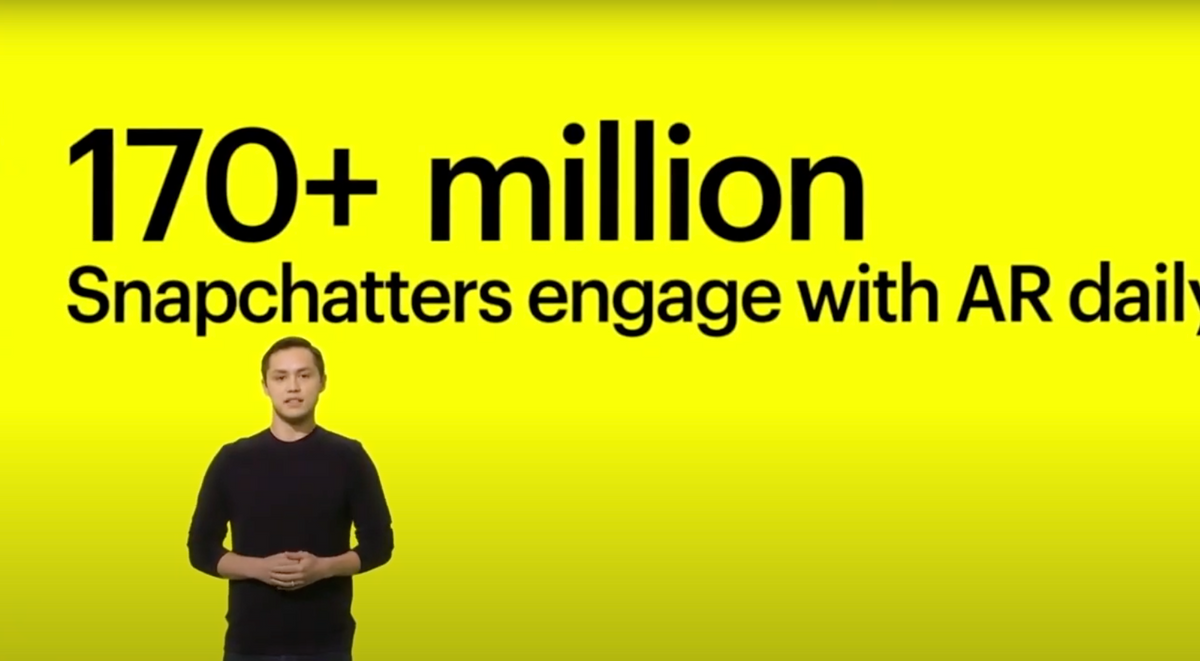Augmented Reality Turning Point

The summer of 2020 will be remembered for a lot of things. Augmented reality probably won’t be one of them.
And yet if this was any other time, the hype machine would be clicking into high gear and we’d be hearing about waves of VC investments and reading today’s equivalent of magazine cover stories on the “birth of augmented reality”.
Snapchat Lowers The Boom
The reality of it struck home yesterday at the Snapchat Partner Summit. Aside from the features it launched, it struck me how explicitly they labelled themselves an AR company. With the stats to back it up (170M+ engagements daily).
The company launched a basket of key features. Among them, the ability to create place-based AR using shared scans:
This is a profound development. The company is announcing that it’s now an AR Cloud company and will compete with Google and Niantic and all of the others who are trying to create a digital twin of the physical world.
But just as important: developers, brands and the public will now be more deeply educated on AR. They won’t just be using the front-facing camera to take selfies, but will tap into the rear camera.
By porting some of these features to Snapkit, developers will be able to power some of their own apps with the Snapchat features.
Unity MARS
Unity has been getting push-back on the pricing of Unity MARS. And their documentation has left some users confused about whether MARS replaces AR Foundation.
This thread is a must-read and has a ton of incredible insight and discussion:
But let’s set aside the pricing discussions. MARS is a significant tool for AR development. It’s an abstraction layer on top of ARFoundation which lets you build logic for your AR experiences and to easily simulate how that logic would work in the ‘real world’:
It will let developers create smarter and smarter AR experiences. And with Unity still being the primary platform for a lot of AR development, it will help to supercharge a new generation of experiences.
WebXR
A final pillar of the last month has been advances in WebXR. We’re finally starting to see Web-based AR experiences that go beyond prototypes.
Bringing rich 3D content to the web is pretty monumental. And at any other time, I think we’d be seeing a lot more attention to the idea that the Web itself is shifting into a new phase of becoming multi-dimensional.
Not JUST because of AR, but also because of VR, best evidenced by Mozilla Hubs.
One More Thing
These are just three examples of profound shifts that would, at any other time, indicate that AR is hitting a tipping point.
But there’s one more thing: Apple.
With WWDC around the corner, Apple will have, by many reports, one last set of ARKit announcements before they launch AR glasses.
I see this year’s WWDC as the final benchmark before we begin to design specifically for Apple wearables. And I’ll be looking for indications that Apple is taking the AR Cloud as seriously as Snapchat!
It has been an insanely great year for AR. I think we’ll be able to look back on the summer of 2020 as the best indicator that the supporting technologies were already in place to support the coming paradigm shift in computing: one in which spatial computing and optical wearables shifted our view from looking down at our phones to looking up at the world around us.